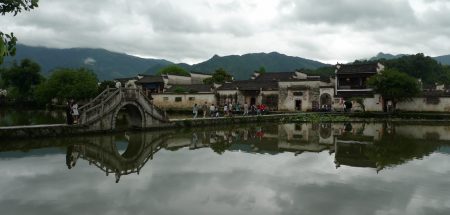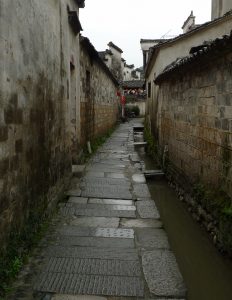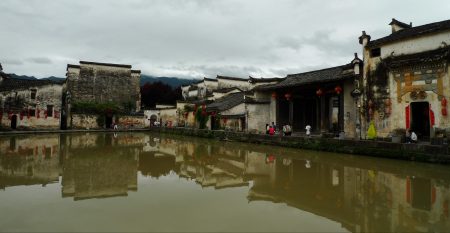Back to holiday blogging! This time I’m visiting another traditional village in Anhui called Hongcun (宏村).
If it looks vaguely familiar it’s because it’s often used as a film set. Most notably for Crouching Tiger Hidden Dragon. This scene with the bridge reflecting on the lake is a favourite among Chinese artists.
The village was designed during the Ming and Qing dynasties along Feng Shui principles. The layout is supposed to resemble the entrails of an ox with the lakes representing different organs and the little flowing streams, like the one on the right here, representing the intestines.
Below is “half moon lake”. This represents the stomach and the little streams flow away from it. It’s really photogenic, even on a cloudy day.
In addition to the water features there is the usual array of houses and temples to wander around. The school house is particularly good. People actually still live here: I met a really friendly lady who had a shop selling tea she grew on here farm, and there’s a couple of other interesting shops dotted around.
To get there I took the bus from the main bus station in Tunxi. It took an hour and a half but was clean and the view from the bus when it got off the main road was amazing. There seems to be some confusing and contradictory transport information online: I went in May 2016 and the busses left every hour at half past and returned on the hour until 5pm. You can buy the return ticket when you board the bus in the car park, but you need to buy the outgoing ticket from the office in the bus station.
The bus stops at a couple of other “scenic villages” on the way. There wasn’t enough time to check them out, but they didn’t look as impressive as Hongcun.







































 Posts
Posts